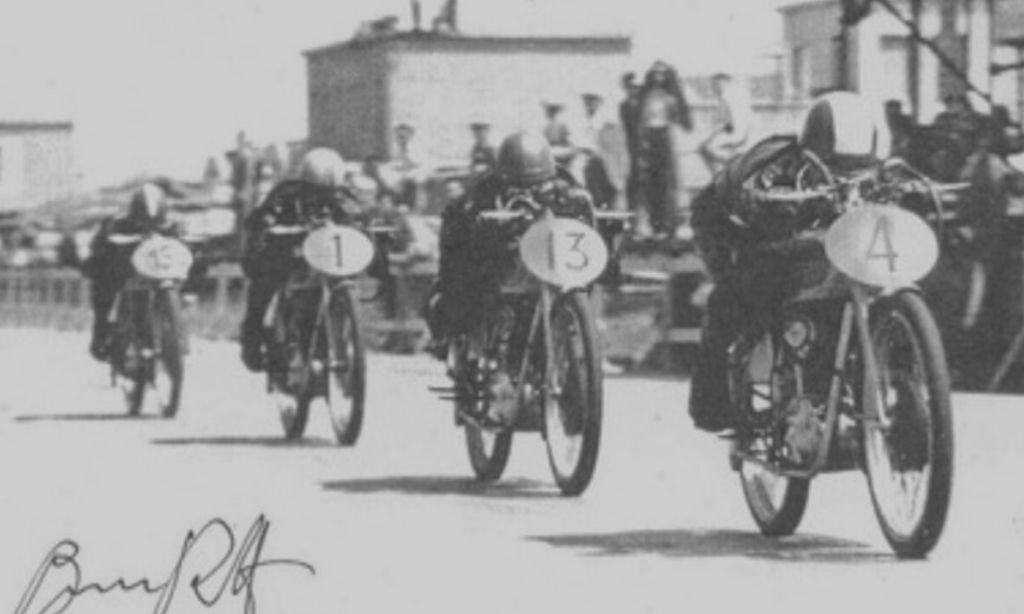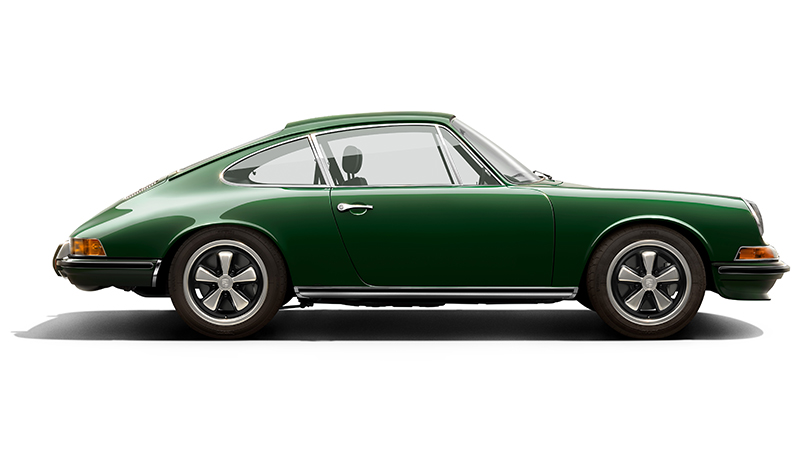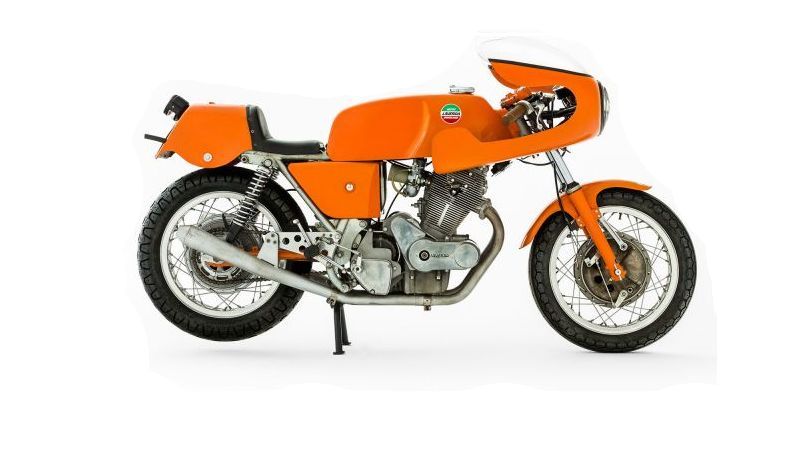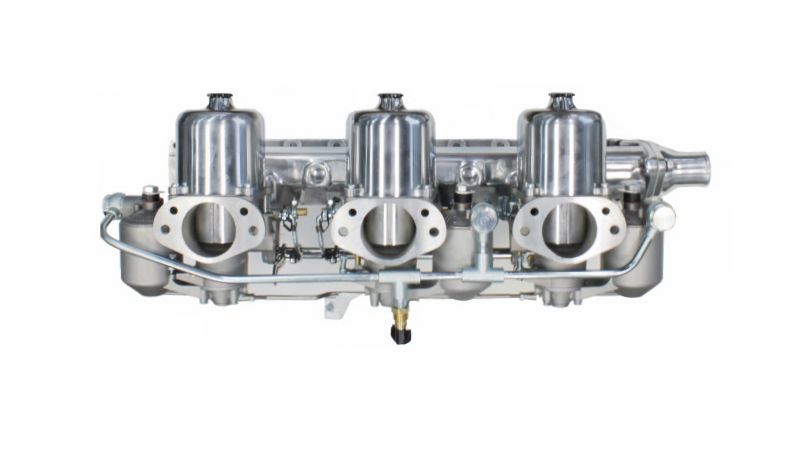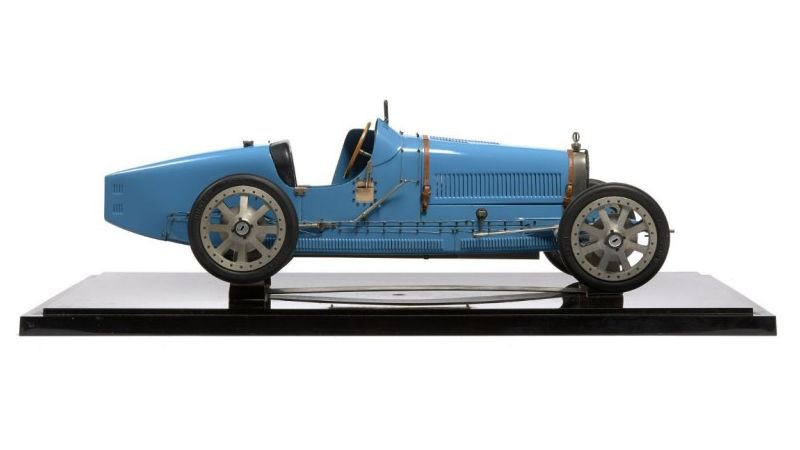F.B. Mondial Motorcycles
Fratelli Boselli Mondial
The history of the F.B. Mondial motorcycle company dates back to 1929 when Count Giuseppe Boselli, a great motorcycling enthusiast and head of a wealthy family from Piacenza formed a business with his brothers Luigi, Carlo, Ettore and Ada.
The Fratelli Boselli, hence F.B., opened a motorcycle shop in Milan familiarly known as El Negusiet selling two-stroke machines built by GD and CM.
In the mid thirties the Boselli brothers started production of motofurgoncini and light trucks in the Oreste and Alfonso Drusiani workshops in Bologna.
During WW2 Bologna was heavily bombed and the Drusiani workshops were razed to the ground. In 1946, and thanks to the Boselli families financial resources, the company recovered and resumed production.
In 1948, the Boselli brothers launched a new venture in Milan to supply war-torn Italy's need for basic transportation. Small-capacity motorcycles named Mondial.
F.B. Mondial, quickly earned a reputation for producing high-quality, lightweight motorcycles. With a keen understanding that racing victories were vital to the company's acceptance, Giuseppe Boselli collaborated with chief engineer Alfonso Drusiani to produce a radical new racer.
Drusiani's 125cc four-stroke single cylinder engine with twin overhead camshafts had an immediate impact on motorcycle racing, took rivals Morini and MV Agusta by storm and earned global acclaim on racetracks throughout Europe.
Designer Alfonso Drusiani's creation employed a short vertical shaft beside the cylinder to drive a train of five gears within the cylinder head. The two camshafts were driven by the gears at each end of the train of five gears.
The engine revved freely due to a nearly square stroke of 53 mm x 56.4 mm and the precise valve actuation from the overhead camhafts, providing the bike with extraordinary power.
Its first race at the 1948 Grand Prix of Nations in Faenza ended prematurely due to a split gas tank, but soon afterward, the bike established new speed records in standing start quarter mile and kilometer sprints and earned a victory at Monza in the inaugural year of the new Grand Prix circuit in 1949.
Drusiani's machine outclassed rivals MV Agusta and Benelli, winning every single race in the 125 cc series from 1949 to 1951 and transforming the perception of the ultra-lightweight class among industry insiders and racing fans alike.
In 1949, Mondials' 125 pilot Nello Pagani won the Dutch Grand Prix as well as the Grand Prix of Switzerland and Gianni Leoni won the Grand Prix of Nations. Mondial won the World Championship and Nello Pagani the individual World title.
In 1950, F.B. Mondial won the World title again, this time with Bruno Ruffo. And in 1951 it was Carlo Ubbiali who rode his bike to a 125 cc class Grand Prix world championship.
Mondial's founding designer, Alfredo Drusiani, decided to start his own company, Moto Comet, and left in 1953. Fortunately, he had hired young engineer Fabio Taglioni a year earlier. Taglioni oversaw upgrades in the Mondial racing and road machines which kept the company competitive, if not on top.
The German factory NSU had invested heavily in the lightweight Grand Prix scene, and dominated the 125cc and 250cc classes in 1953 and 1954, while rival MV Agusta did the same in 1955 and 1956.
In 1955 Provini won the Italian Championship on a 125 DOHC Mondial.
Drusiani returned to Mondial in 1956 after the failure of Moto Comet, and Mondial regained its courage. Drusiani perfected Taglioni's engine design, who had left to revamp Ducati's lineup, and the team hired three incredibly talented riders for the 1957 season; Tarquinio Provini, Cecil Sandford and Sammy Miller.
With its 125cc and 250cc engines fully sorted, tiny F.B. Mondial won the 1957 Grand Prix World Championships in both the 125 cc and 250 cc classes. Provini won the Tourist Trophy, the Grand Prix of the Netherlands and the Belgian Grand Prix and trounced the 125 class, Miller took fourth and Sandford finished sixth.
F.B. Mondial totally dominated the 250 class: Cecil Sandford winning the 250cc title, with Provini second and Sammy Miller third.
For a company that had only just introduced a road-going 250cc machine, and with almost no presence in the 250cc racing class prior to that year, this was a stunning development.
F.B. Mondial achieved sudden and lasting fame in the motorcycle world by earning ten world titles in its first nine years of operation. Mondial's racing victories translated to the successful marketing of production bikes for the general public.
Mondial introduced its first production roadsters in 1950. The pushrod four-stroke 125cc bikes possessed some styling and engineering similarities to their racing counterparts, and were offered in sport, super sport, and touring trim. Each featured identical frames with pressed-steel girder forks and plunger rear suspension.
Although more expensive than counterparts offered by rival companies, the Mondial roadsters were particularly sturdy, fast, and in high demand by riding enthusiasts eager to mount bikes so similar to the world champions of the racing circuit.
Mondial's Grand Prix titles in 1949, 1950, and 1951 were referenced in the company's logo on the gas tanks of its roadsters.
F.B. Mondial introduced a 250 cc road bike in 1956 called the Sport, which used an over-bored 200 cc motor, now 230cc, from the company's Extra Lusso model, although later 250s used a larger cylinder barrel for a full 250 cc.
The final versions of late 1957 used 5-speed gearboxes and were the fastest 250 cc production machines ever offered by F.B. Mondial, which only built 250 cc road machines for three years.
It's estimated fewer than 25 250s were produced in this period in all versions, making the 1957 F.B. Mondial Super Sport an extremely rare find.
After the company's withdrawal from racing, first in 1957 and then again in 1966, sales of their esteemed 125 cc to 175 cc roadsters plummeted.
Although the company was in decline in the 1960s, the famous factory continued to produce extraordinary motorcycles on occasion. An example is the Record Sport, introduced at the 1965 Milan Motorcycle Exhibition and designed to mimic the increasingly popular 50cc race bikes of the mid-1960s.
The Record was a 48cc two-stroke single cylinder bike with four gears, an angled carburetor, and 5bhp. A long narrow tank, short seat with raised tail, and mechanically operated Campagnolo disc front brake enhanced its racing appearance.
The Record was the first production motorcycle of this size to adopt a disc brake and featured several high-end components, such as lightweight alloy rims and telescopic hydraulic shocks. The overall production quality and attention to details on the Record far exceeded what customers expected from a machine in the 50cc class.
We are looking for the following motorcycles. If you do have any of the below listed vehicles - and you are ready to sell - please Contact Us.
| Competizione |
|---|
| 125 |
| 175 |
| 250 Bialbero |
We buy, sell, broker, locate, consign and appraise exceptional classic, sports and collector Mondials'
Contact us when you are serious about buying a fine Mondial Motorcycle or to arrange a free and confidential valuation with a view to selling.
